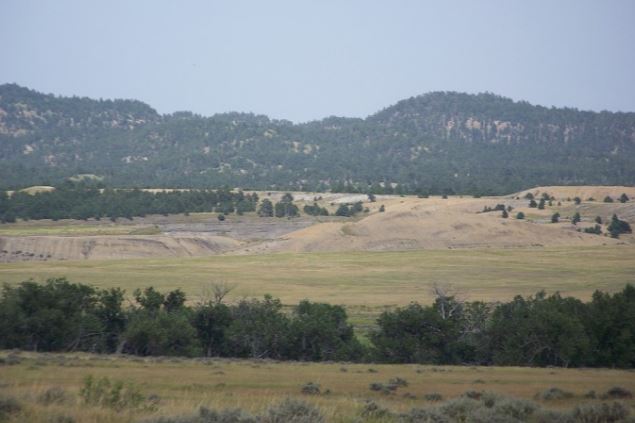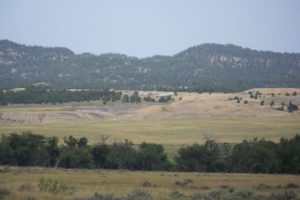Azarga raising $3 million for uranium projects

Azarga Uranium's Dewey Burdock Project in southwestern South Dakota is suitable for in-situ uranium recovery. Source: Azarga Uranium Corp.

Azarga Uranium Corp. [AZZ-TSX; AZZUF-OTCQB] said Wednesday March 13 that it has made arrangements for a $3 million private placement that will be used to advance its flagship Dewey Burdock uranium project in South Dakota and Gas Hills Project in Wyoming.
The company said the non-brokered private placement will consist of up to 13 million units at 23 cent per share. Commitments of $3 million have been received, with institutional investors subscribing for most of the financing, the company said in a press release.
Azarga share were unchanged at 21 cents on Wednesday, and trade in a 52-week range of 19.5 cents and 34 cents.
Azarga is positioning itself to be America’s next uranium developer. In keeping with that plan, the company has been working to gain the approvals it needs to commence construction at its Dewey Burdock Project using low-cost in-situ recovery methods.
Dewey Burdock is one of five U.S. uranium projects in the company’s asset portfolio. It also owns a 70% stake in the Kyzyl Ompul Project, which ranks as the largest known uranium deposit in the Kyrgyz Republic.
The 100%-owned Dewey Burdock Project is located in the Edgemont uranium mining district of South Dakota southwest of Rapid City near the Wyoming border. It covers 12,500 surface acres and is divided into two resource areas known as Dewey and Burdock.
Azarga is planning to deploy technology known as in-situ recovery (ISR) or solution mining in a bid to recover the uranium.
In-situ recovery involves processing the uranium while it is still in the ground through the injection of catalyzing agents into the ore.
In situ-recovery is only possible in porous geological formations (like sandstone) which are amenable to such a technique. On average, the capital spend needed to put an ISR uranium project into production is less than 15% of the cost to build a conventional hard-rock uranium mine.
According to a preliminary economic assessment (PEA) filed in April 2015, Dewey Burdock can be put into production with an initial capital expenditure of only US$27 million.
The April 2015 PEA states that the project hosts a NI 43-101 compliant measured and indicated resource of 8.6 million pounds, grading 1.29% U3O8. On top of that is an inferred resource of 3.5 million tonnes of 0.20% U3O8.
Over a 16-year mine life, Dewey Burdock is forecast to produce 9.7 million pounds of U3O8.
However, the company has said its immediate priority is to obtain the necessary permits and licenses it needs to advance the project to the construction phase.
Meanwhile, the financing announced on Wednesday will solidify the company’s balance sheet and fund its corporate initiatives as the supply and demand fundamentals of the uranium market continue to improve, said Azarga President and CEO Blake Steele.
Azarga plans to complete an updated preliminary economic assessment at Dewey Burdock and quantify uranium mineralization identified at the Dewey Terrace project (located directly adjacent to the Dewey Burdock Project). Proceeds from the private placement will be used to evaluate in situ recovery development options for the Gas Hill Project.
